1.12 Creating Domain Profiles with GroupWise on Windows
When GroupWise is on Windows the Server Only model must be used to backup the data to GroupWise Disaster Recovery.
1.12.1 Domain Profile: Server Only Model (SAMBA)
Create a domain profile for SAMBA/Windows on the GroupWise Disaster Recovery Server. You should have already created a backup directory. For information, see Create a Backup Data Directory on the GroupWise Disaster Recovery Server.
-
Start the GroupWise Disaster Recovery Administration Console by entering reload in the command line.
-
Select Create: Create New Profiles.
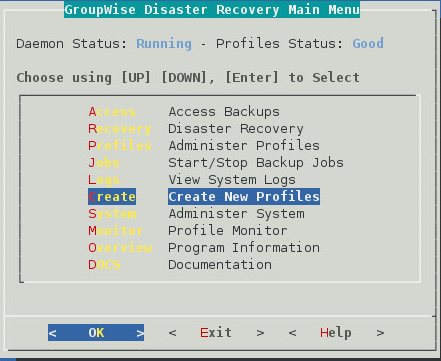
-
Select Domain: Create a New GroupWise Domain Profile.
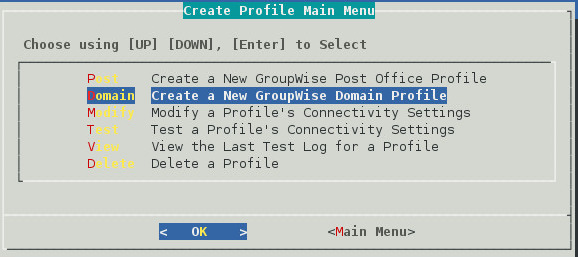
-
Give the profile a name. The profile name should not exceed eight characters. Use letters and numbers only, no spaces or other characters. For example:
Domain
. Be aware, that a profile cannot be renamed, once it has been created. Choose the name wisely. Perhaps you will want to name the profile so that the name is the same as the GroupWise post office or domain that the profile represents. Once complete, click Next.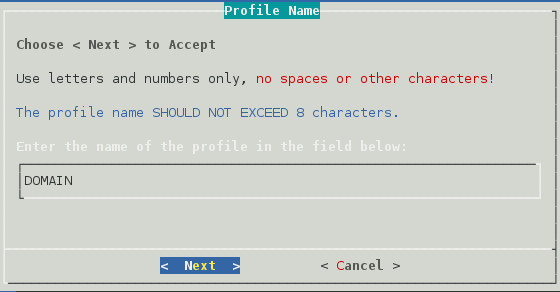
-
Give the profile a description. The profile description should not exceed 60 characters and should not have comma(,), nor dollar sign($) characters. For example:
Primary Domain
. The description of the profile will be added to the Agent Log when backup jobs are run for the profile. Once complete, click OK.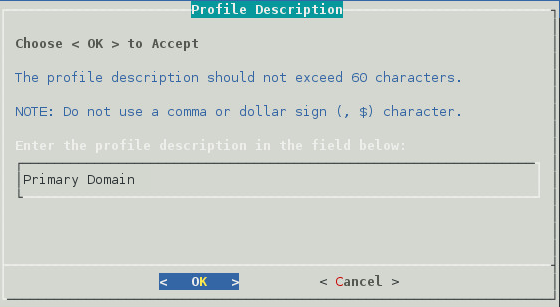
-
Enter the path or browse to the local destination directory to store the backup data. For example: /reload. This path can be a location on the Linux server, or an NFS mount to another Linux/Unix server, or to a SAN. The path should always be available; GroupWise Disaster Recovery is not configured to mount paths in order to access stored data. Also, the path should be to a location that has a lot of disk space available. Once complete, click Next.
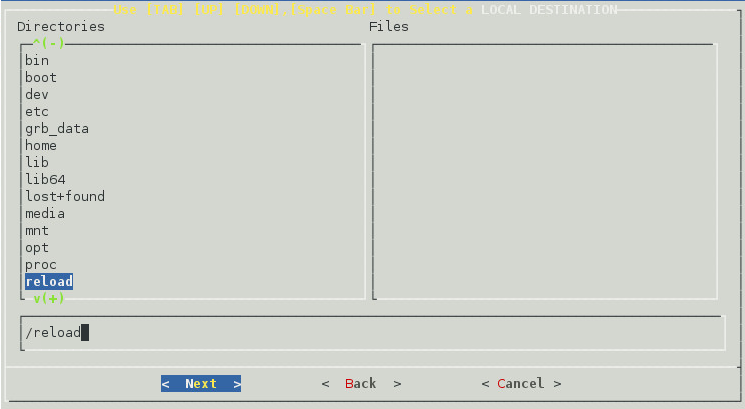
-
Confirm the path to the local destination directory.
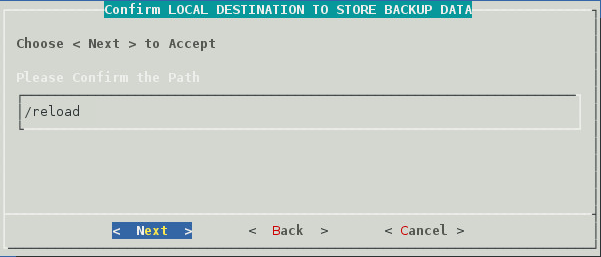
-
Select the server platform Samba Windows Server.
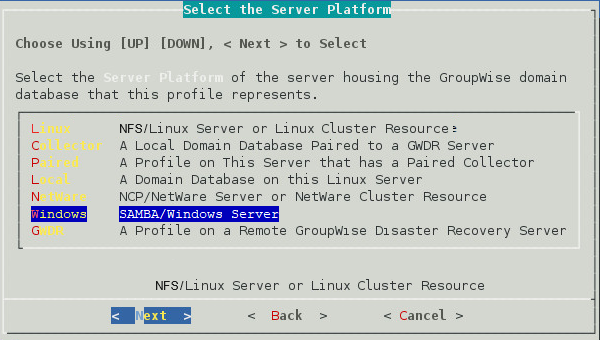
-
Select the SAMBA/Windows server address type: 1 TCP/IP Address or 2 DNS Address.
-
Enter the SAMBA/Windows server IP address or DNS address.
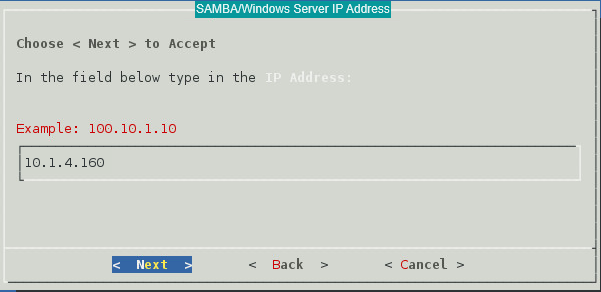
-
Enter the SAMBA/Windows share name. For example:
gwdomshare
-
A prompt appears that asks if the GroupWise domain database is located at the SAMBA/Windows Share path. Respond accordingly and provide the correct database path if you select No.
-
When prompted, enter the Windows user name and password that has MRLW rights for the path provided.
-
A Profile Summary page appears.
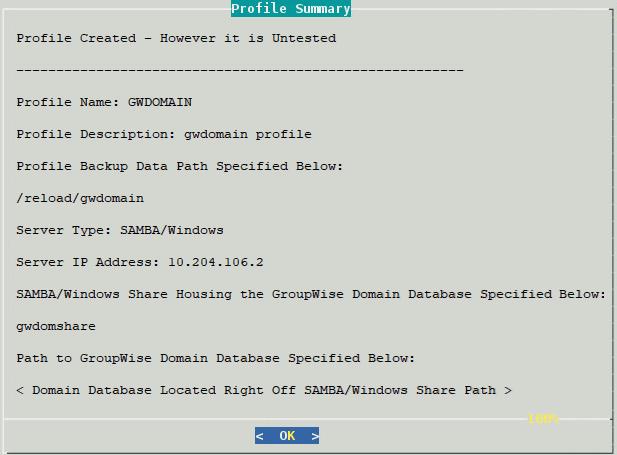
-
The Test and Initialize page allows you to finalize the profile by selecting Test.
-
If the configuration is incorrect, select Skip and make your changes.
-
Run the test and it will indicate success or failure.
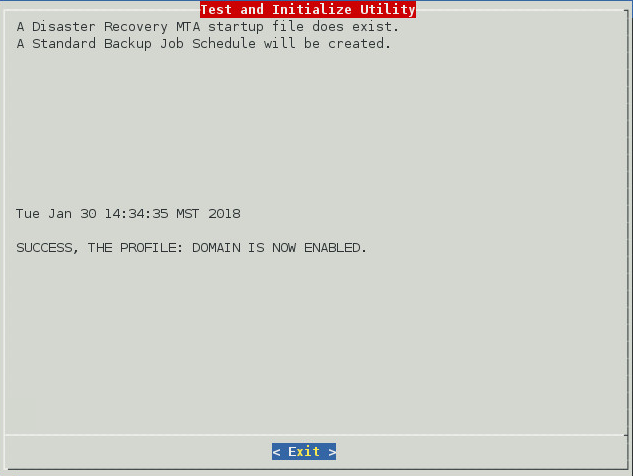
1.12.2 Domain Profile: Server Only Model (NFS)
IMPORTANT:The information in this section is “optional” and should only be used if you are not using Samba Server as the default backup for disaster recovery. If you are using Samba Server, reference Domain Profile: Server Only Model (SAMBA).
On the GroupWise Disaster Recovery server, create a data directory and a profile.
-
Create a directory for the backup data. For example:
mkdir /reload
-
Start the GroupWise Disaster Recovery Administration Console by entering reload in the command line.
-
Select Create: Create New Profiles.

-
Select Domain: Create a New GroupWise Domain Profile.

-
Give the profile a name. The profile name should not exceed eight characters. Use letters and numbers only, no spaces or other characters. For example:
Domain
. Be aware, that a profile cannot be renamed, once it has been created. Choose the name wisely. Perhaps you will want to name the profile so that the name is the same as the GroupWise post office or domain that the profile represents. Once complete, click Next.
-
Give the profile a description. The profile description should not exceed 60 characters and should not have comma(,), nor dollar sign($) characters. For example:
Primary Domain
. The description of the profile will be added to the Agent Log when backup jobs are run for the profile. Once complete, click OK.
-
Enter the path or browse to the local destination directory to store the backup data. For example: /reload. This path can be a location on the Linux server, or an NFS mount to another Linux/Unix server, or to a SAN. The path should always be available; GroupWise Disaster Recovery is not configured to mount paths in order to access stored data. Also, the path should be to a location that has a lot of disk space available. Once complete, click Next.

-
Confirm the path to the local destination directory.

-
Select the server platform Linux: NFS/Linux Server or Linux Cluster Resource. [Yes, the GroupWise server is Windows, but the share is NFS, which is the important part].
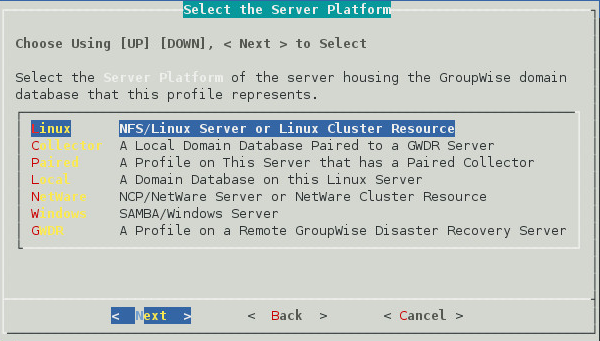
-
Select Linux server type Standard: Standard NFS/Linux Server.
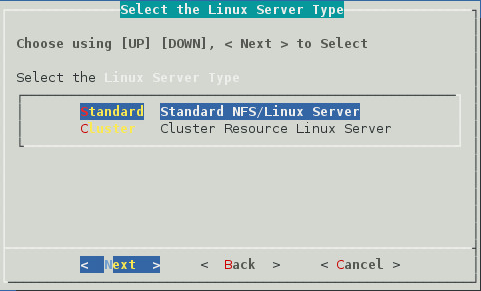
-
Select the NFS/Linux server address type: 1 TCP/IP Address or 2 DNS Address.
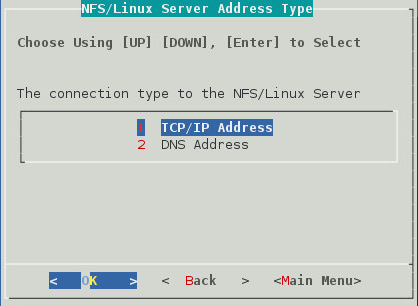
-
Enter the NFS/Linux server IP address or DNS host name address.
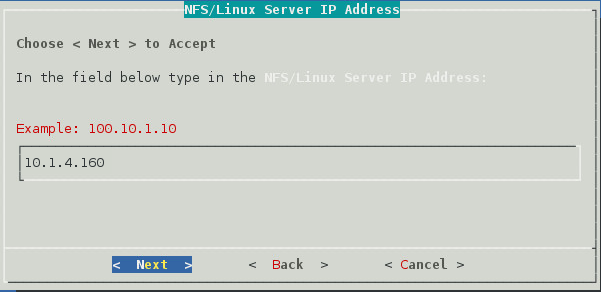
-
Enter the NFS export path on the GroupWise server from above. For example:
/groupwise/domain
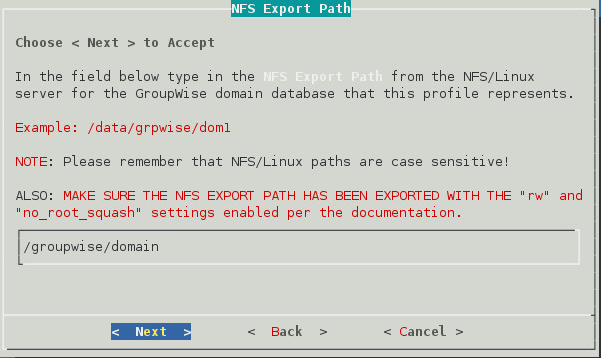
-
A warning page appears that asks if the IP Address and Export path are correct.
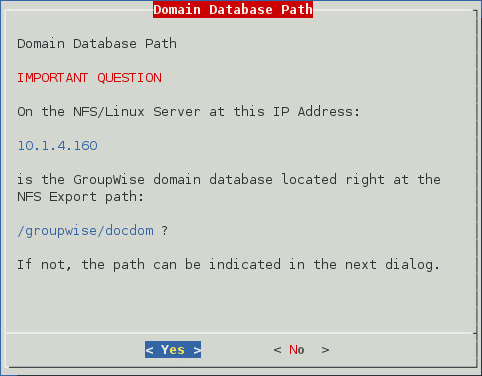
-
A Profile Summary page appears.
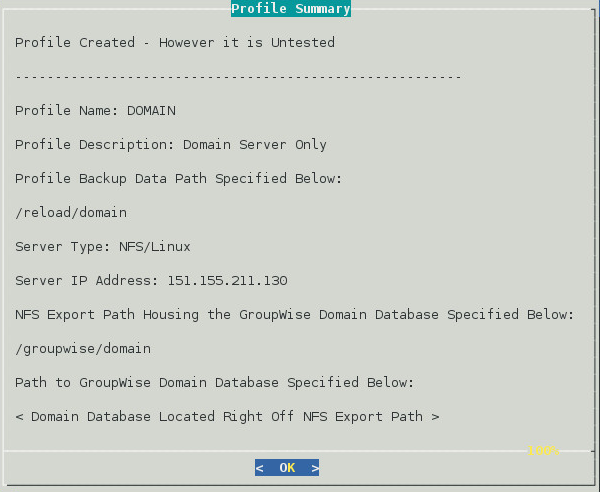
-
The Test and Initialize page allows you to finalize the profile by selecting Test.
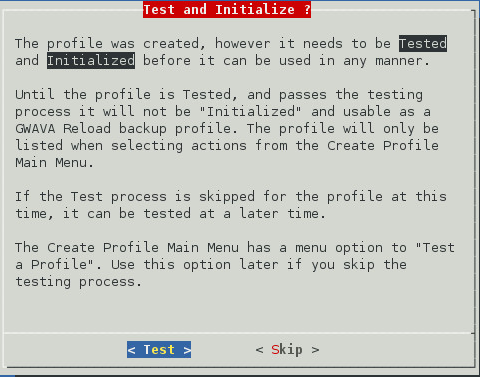
-
If the configuration is incorrect, select Skip and make your changes.
-
Run the test and it will indicate success or failure.
